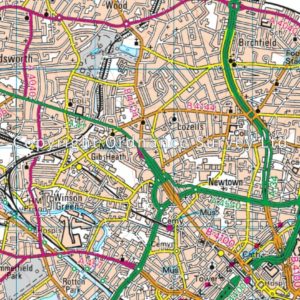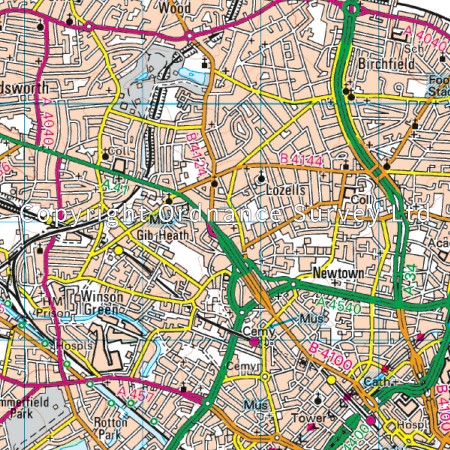Self-driving vehicles will need maps with resolution better than five centimetres with real-time updating to operate in complex environments, according to a report by Ordnance Survey and Zenzic, the UK hub organisation for self-driving vehicle development.
The report sets out what the global standards should be for high-definition mapping; necessary for the safe deployment of self-driving vehicles.
As well as high resolution, maps will also need to include information on curbs, street-level features like lamp-posts, pedestrian crossings and road markings. Real-time updates to maps will also be crucial to let self-driving vehicles ‘see’ around corners for temporary objects in the road like skips or roadworks.
 It points out that self-driving vehicles use a range of sensors to ‘see’ the world around them. However, interpreting that information in real-time requires a lot of processing power. With high-definition maps which are updated in real-time, a self-driving vehicle is able to reference the position of other road users against what it already knows to be there. It also provides a back-up in situations where its sensors are less effective. Adverse weather conditions like heavy-rain or sun reflecting off a wet-road can make relying on sensor data alone difficult.
It points out that self-driving vehicles use a range of sensors to ‘see’ the world around them. However, interpreting that information in real-time requires a lot of processing power. With high-definition maps which are updated in real-time, a self-driving vehicle is able to reference the position of other road users against what it already knows to be there. It also provides a back-up in situations where its sensors are less effective. Adverse weather conditions like heavy-rain or sun reflecting off a wet-road can make relying on sensor data alone difficult.
Currently there is no single source of high definition mapping data, each self-driving company is having to develop its own from the ground up. Ordnance Survey suggests a neutrally hosted platform for mapping data would increase the confidence in the data as it comes from multiple sources and would help different self-driving vehicles co-exist on the same piece of road. For this to work standards for how data is collected and shared will need to be implemented globally.
“The UK’s goal is to be able to benefit from self-driving vehicles on our roads at scale by 2030, a target that requires the development of technologies and tools which do not fully exist today,” said Zenzic chief executive Daniel Ruiz.
And Simon Navin, Ordnance Survey’s head of innovation programmes, said: “Through our work with Zenzic we are helping define the geospatial and mapping requirements that will accelerate the testing and adoption of self-driving technologies so that these benefits can be realised safely and efficiently. As Great Britain’s national mapping agency, we believe that consistent, authoritative and trusted data provides a framework for safe operation, interoperability and open standards development. It will also enable innovative solutions from a wide range of providers who will bring new and exciting solutions to the U.K. mobility sector”.







